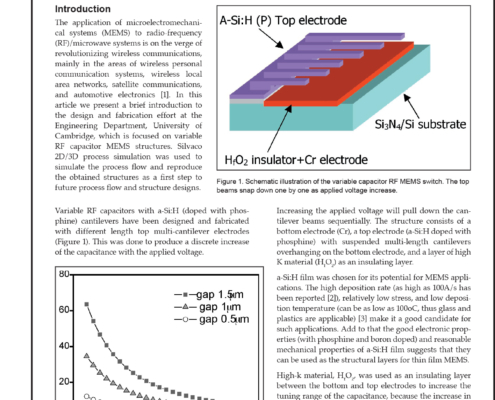
Process Flow Simulation and Manufacture of Variable RF MEMS Capacitors
Introduction
The application of microelectromechanical systems (MEMS) to radio-frequency (RF)/microwave systems is on the verge of revolutionizing wireless communications, mainly in the areas of wireless personal communication systems, wireless local area networks, satellite communications, and automotive electronics [1]. In this article we present a brief introduction to the design and fabrication effort at the Engineering Department, University of Cambridge, which is focused on variable RF capacitor MEMS structures. Silvaco 2D/3D process simulation was used to simulate the process flow and reproduce the obtained structures as a first step to future process flow and structure designs.
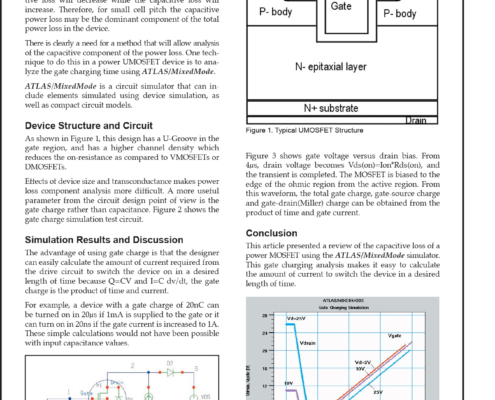
Gate Charging Simulation Using Atlas/MixedMode
Introduction
In modern power devices, the total power loss comprises both a conductive power loss component and a capacitive loss component. As the cell pitch decreases, the conductive loss will decrease while the capacitive loss will increase. Therefore, for small cell pitch the capacitive power loss may be the dominant component of the total power loss in the device.
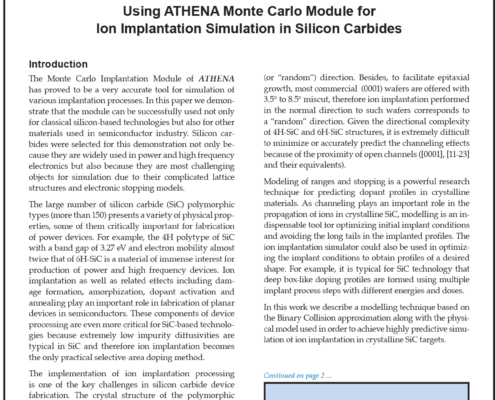
Using Athena Monte Carlo Module for Ion Implantation Simulation in Silicon Carbides
Introduction
The Monte Carlo Implantation Module of ATHENA has proved to be a very accurate tool for simulation of various implantation processes. In this paper we demonstrate that the module can be successfully used not only for classical silicon-based technologies but also for other materials used in semiconductor industry. Silicon carbides were selected for this demonstration not only because they are widely used in power and high frequency electronics but also because they are most challenging objects for simulation due to their complicated lattice structures and electronic stopping models.
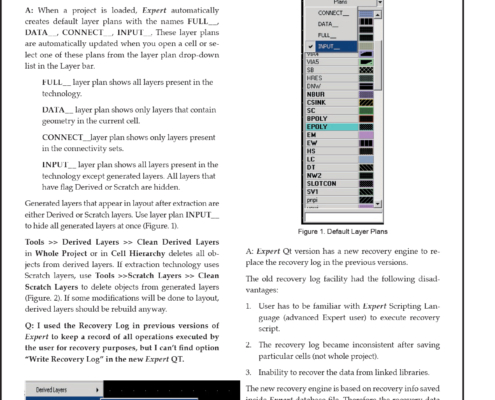
Is there a way to turn-off all of the generated layers
Is there a way to turn-off all of the generated layers so that the layout modifications can be done without them cluttering things?
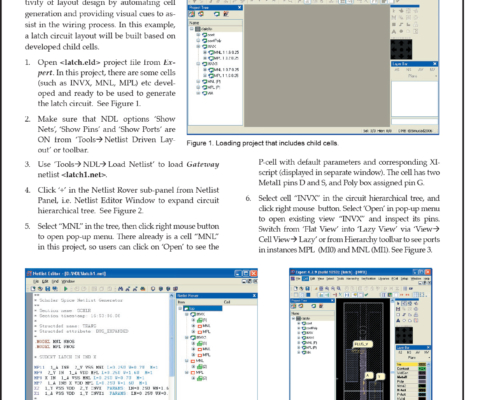
Expert’s Netlist Driven Layout
Expert features a powerful Netlist Driven Layout (NDL) function to assist the user in creating a layout. It increases the productivity of layout design by automating cell generation and providing visual cues to assist in the wiring process. In this example, a latch circuit layout will be built based on developed child cells.
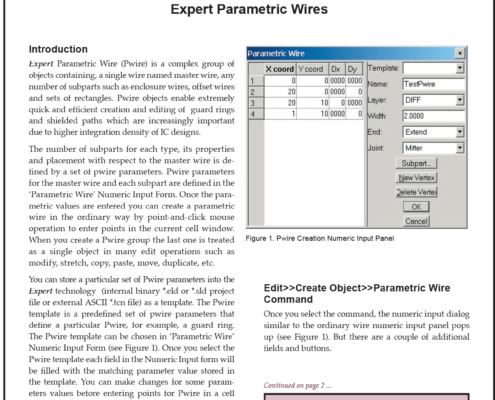
Expert Parametric Wires
Expert Parametric Wire (Pwire) is a complex group of objects containing, a single wire named master wire, any number of subparts such as enclosure wires, offset wires and sets of rectangles. Pwire objects enable extremely quick and efficient creation and editing of guard rings and shielded paths which are increasingly important due to higher integration density of IC designs.
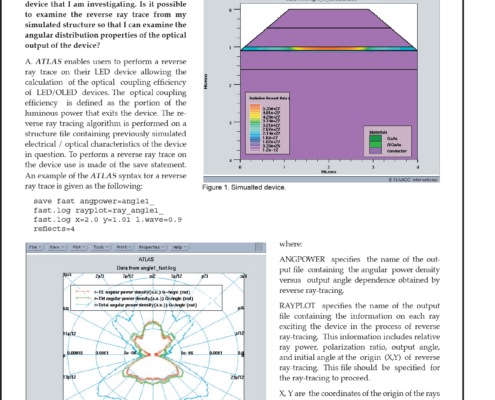
I am currently using ATLAS/ Blaze to model the electrical properties of an LED device
I am currently using ATLAS/ Blaze to model the electrical properties of an LED device that I am investigating. Is it possible to examine the reverse ray trace from my simulated structure so that I can examine the angular distribution properties of the optical output of the device?
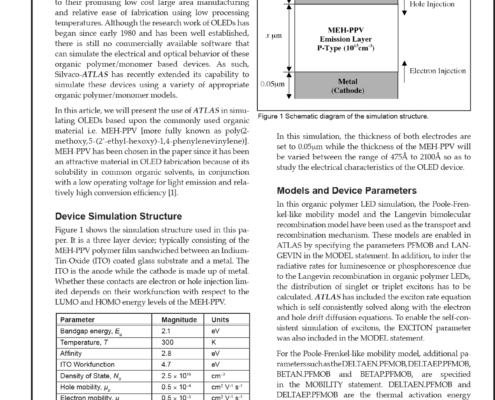
Simulating the Device Characteristics of MEH-PPV Polymer Light Emitting Diodes Using Atlas
Organic light emitting diodes (OLEDs) are attracting great interest in the display technology industry due to their promising low cost large area manufacturing and relative ease of fabrication using low processing temperatures. Although the research work of OLEDs has began since early 1980 and has been well established, there is still no commercially available software that can simulate the electrical and optical behavior of these organic polymer/monomer based devices. As such, Silvaco-ATLAS has recently extended its capability to simulate these devices using a variety of appropriate organic polymer/monomer models.
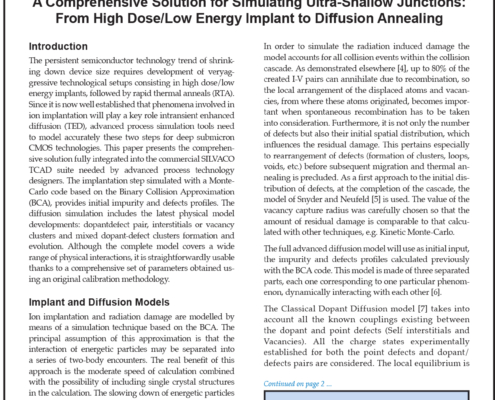
A Comprehensive Solution for Simulating Ultra-Shallow Junctions: From High Dose/Low Energy Implant to Diffusion Annealing
The persistent semiconductor technology trend of shrinking down device size requires development of veryaggressive technological setups consisting in high dose/low energy implants, followed by rapid thermal anneals (RTA).
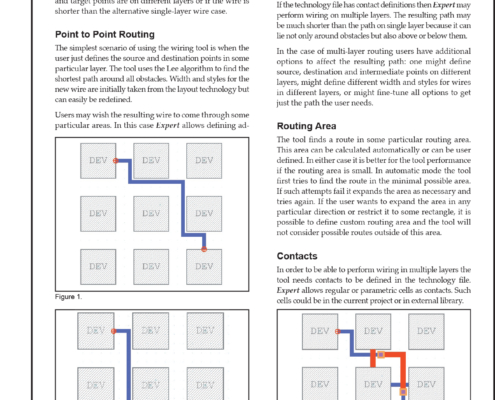
Expert: Wiring
The wiring tool in Expert automatically creates the shortest wire connecting two points specified by the user. The created wire goes around any existing layout objects. It may lie in multiple layers (multi-wire) if the source and target points are on different layers or if the wire is shorter than the alternative single-layer wire case.
